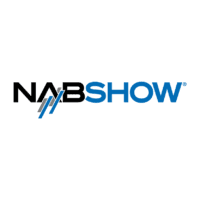
This column was originally going to be a recap of some of the technology I saw on display at NAB Show 2024 earlier this month. But as I’ve been spending much of my free time since returning helping to care for my mother as she recovers from surgery, I’ve also been thinking a bit more about the over-arching concept driving much of the technological innovation in the radio space right now.
For those that have never been to NAB, it is multiple events in one. There is the show floor, there’s the engineering conferences, the sales conferences, the executive meetings, plus other events piggybacking on it such as Broadcast Education Association. Really it has something for every facet of the broadcast community, except for audio content creators, but even there was an attempt at improving those events this year.
What did generate much of my attention was a number of new or recently emerging players into the radio broadcast tech sphere especially on the end-user side. New cloud based playout systems, embedding of AI tech, and the moving of the playout tech from the studio to the transmitter site were seen across the floor of the show.
We are headed towards one do-all application/appliance for broadcasting. Super Hi-Fi’s partnership with Orban to place programming, processing, PPM encoding, stream encoding, and metadata in one box is just the start. Soon all of those features could be included in a transmitter along with access to cloud based music scheduling and voicetracking allowing one device to power nearly all of a radio station’s necessary functions.
Other companies are doing the same. From Radio.cloud to internal systems like iHeartMedia’s Sound+, the shift to an all-in one combination of application and appliance is only going to continue. It will lead to an improved product as workflows are simplified to allow access to all relevant content in one place. AI generated auto-segueing of songs is already happening. Over time these platforms and others will include your board/faders, allow for any audio clip or song needed to be dropped in on the fly, auto-produce podcasts and on-demand audio clips and publish them to the station website, and allow for customization on the fly in ways that would still take hours of production time today.
These are the AI capabilities that radio can and should get behind as it will enable talent to better utilize their time and resources. While still being used as a novelty more than anything at this point, it is the continued growth of AI voices in on-air shifts that still is worrisome, but the fact it has not caught on in a major use is still a good sign for human voices.
But it will also enable simplicity.
One of the other major topics of discussion at and around NAB was in regards to how stations are going to solve the looming engineering crisis. Many operators, including those in larger markets such as Las Vegas, are down to relying on over-worked contract engineers at or nearing retirement age. A CEO asked us point-blank, “What do I have to do to train and retain a single engineer?” Having less technology to have to maintain will be a great start, especially since training will become easier. There will always be a demand for RF engineers, but radio needs to find IT capable people for studios and a combined infrastructure will make that much easier in helping to teach and learn broadcast IT.
The ability for future innovation built around a broadcast architecture that encompasses everything will only accelerate. We’re already at the point where talent can broadcast from anywhere in the world just by clicking an icon in an app. Soon it may also provide web and social media content on the fly, podcasts published within seconds of content airing live, and dynamic customized broadcasts specifically for each listener truly making radio a one to one service in addition to the one to many offering it has always provided. A singular hardware/software solution creating a truly singular proposition.
